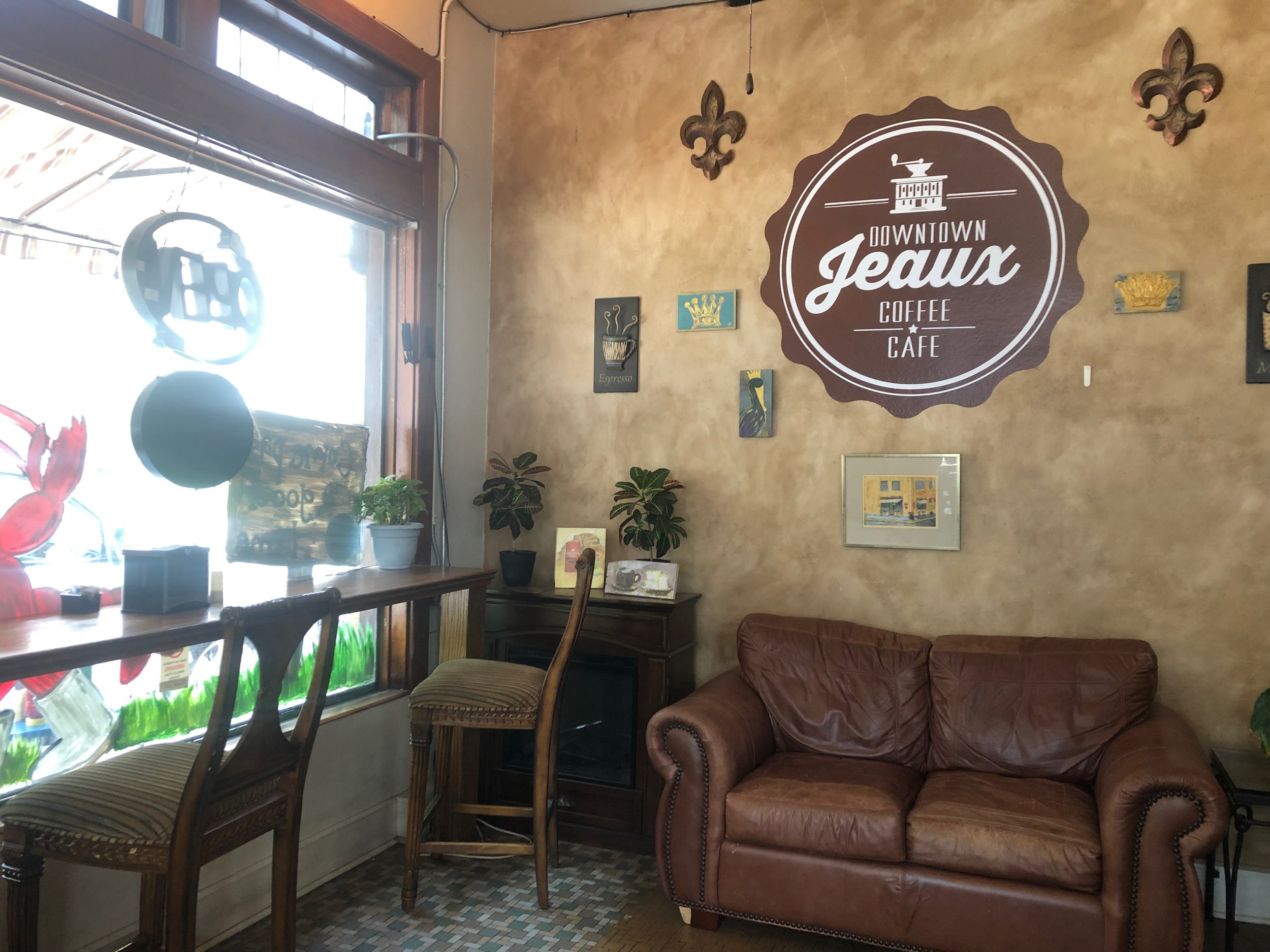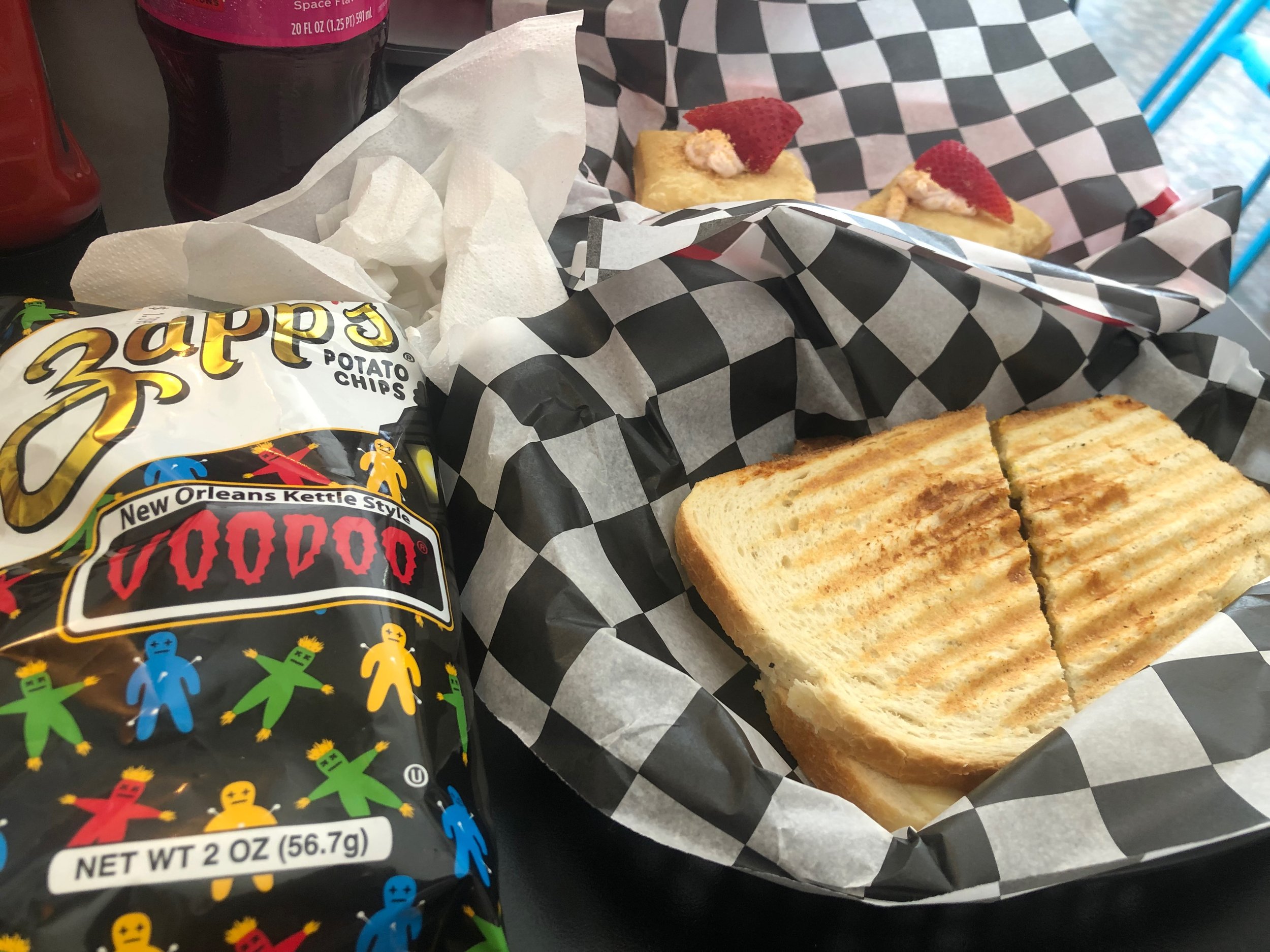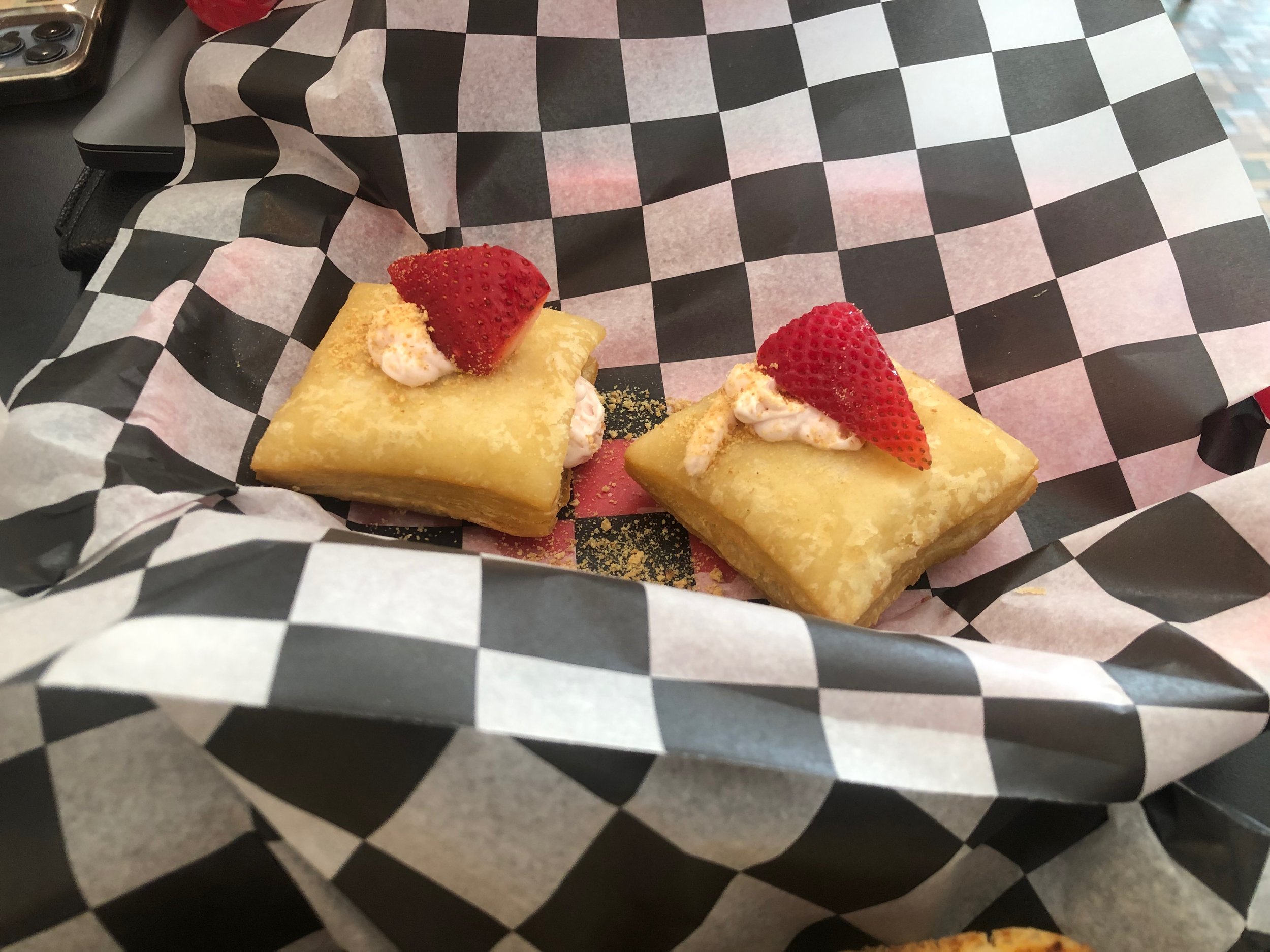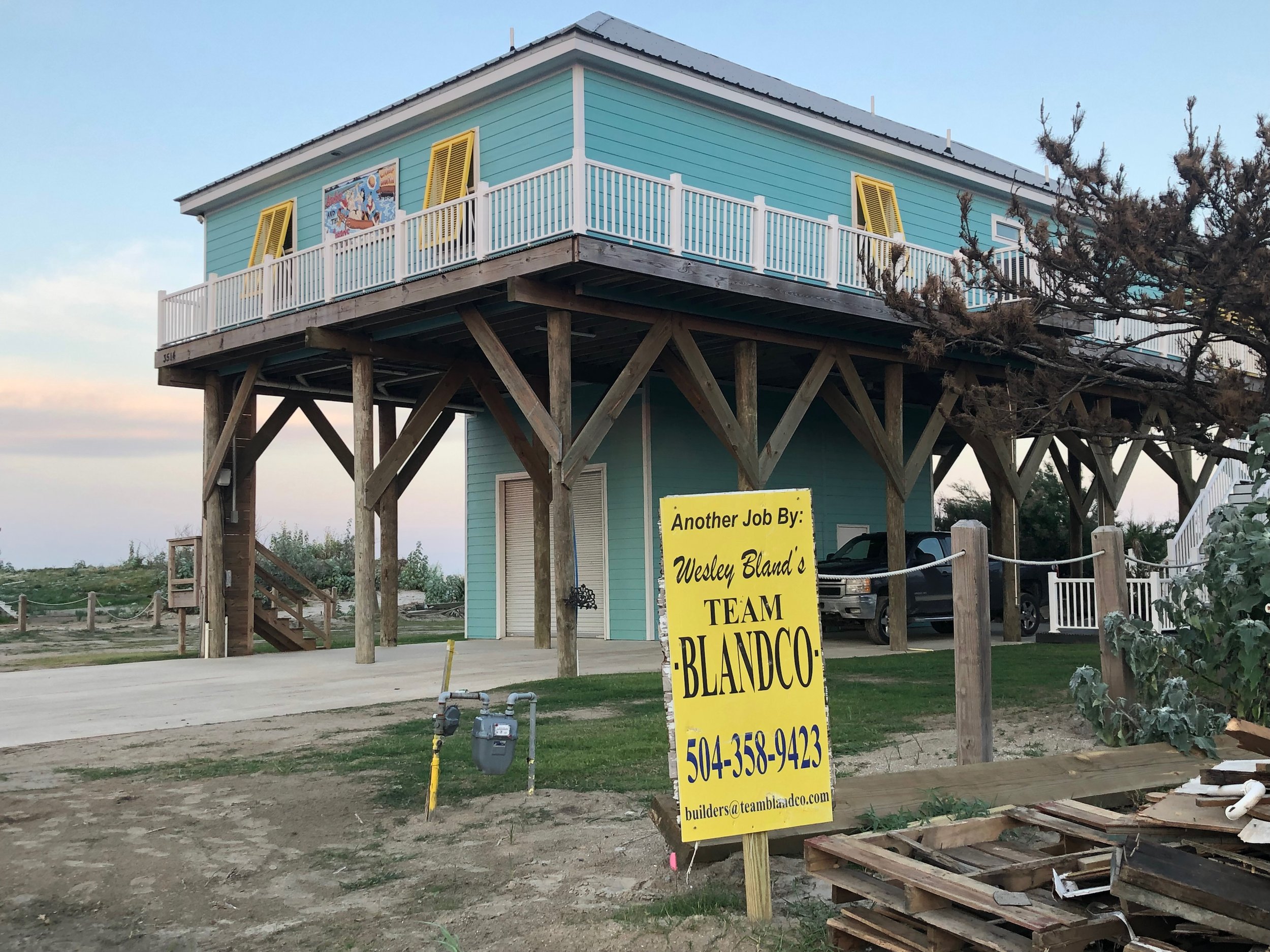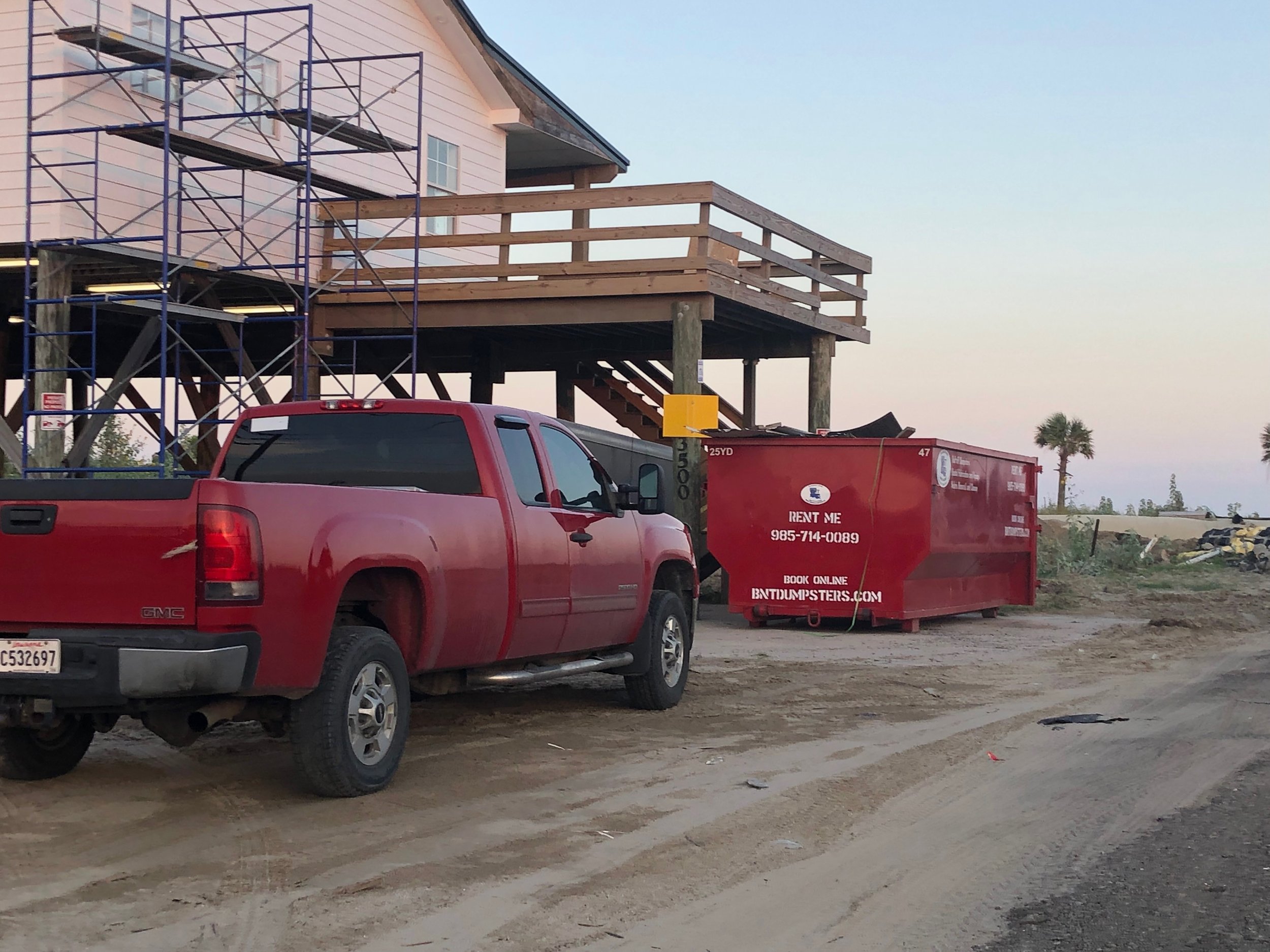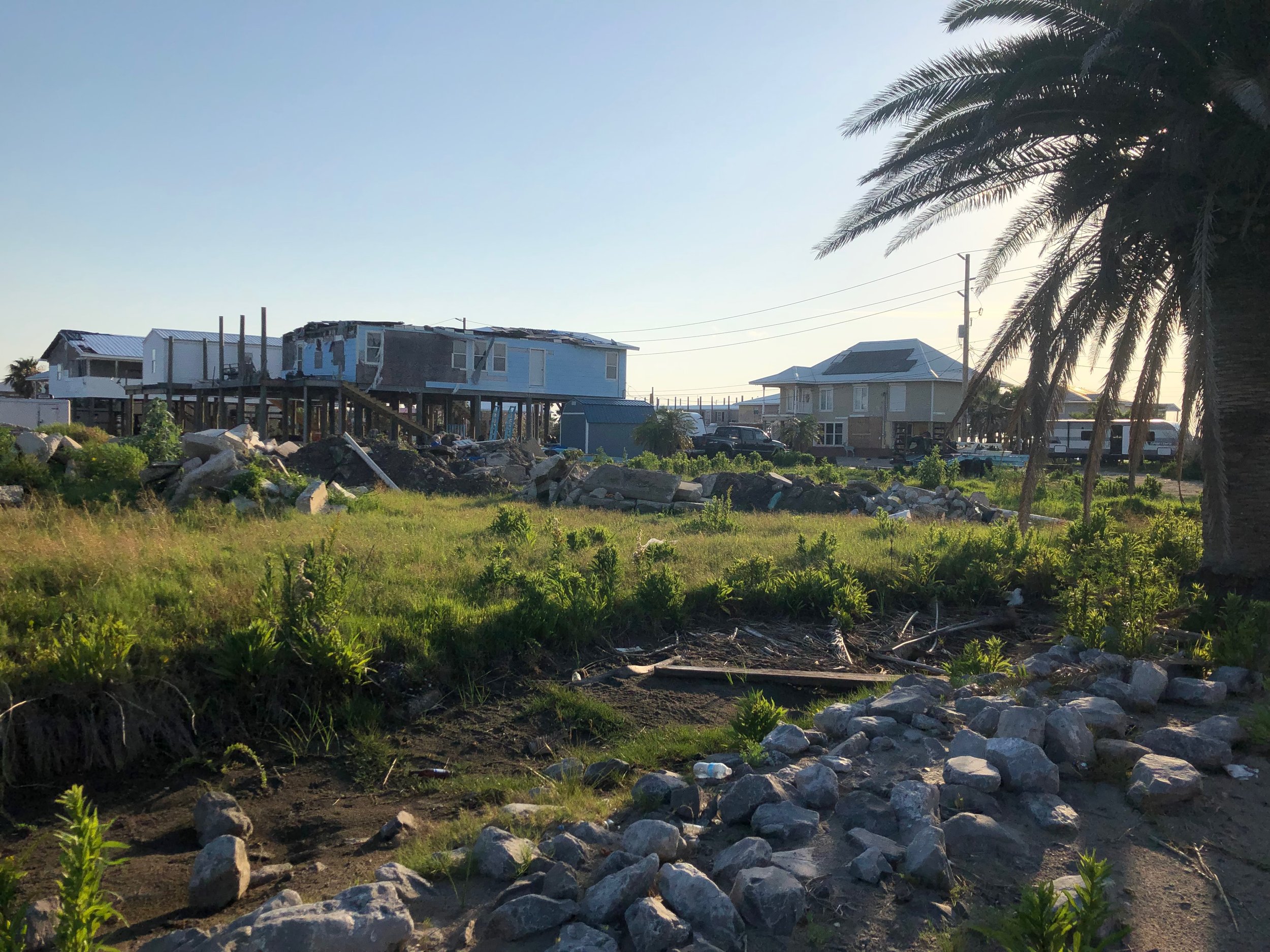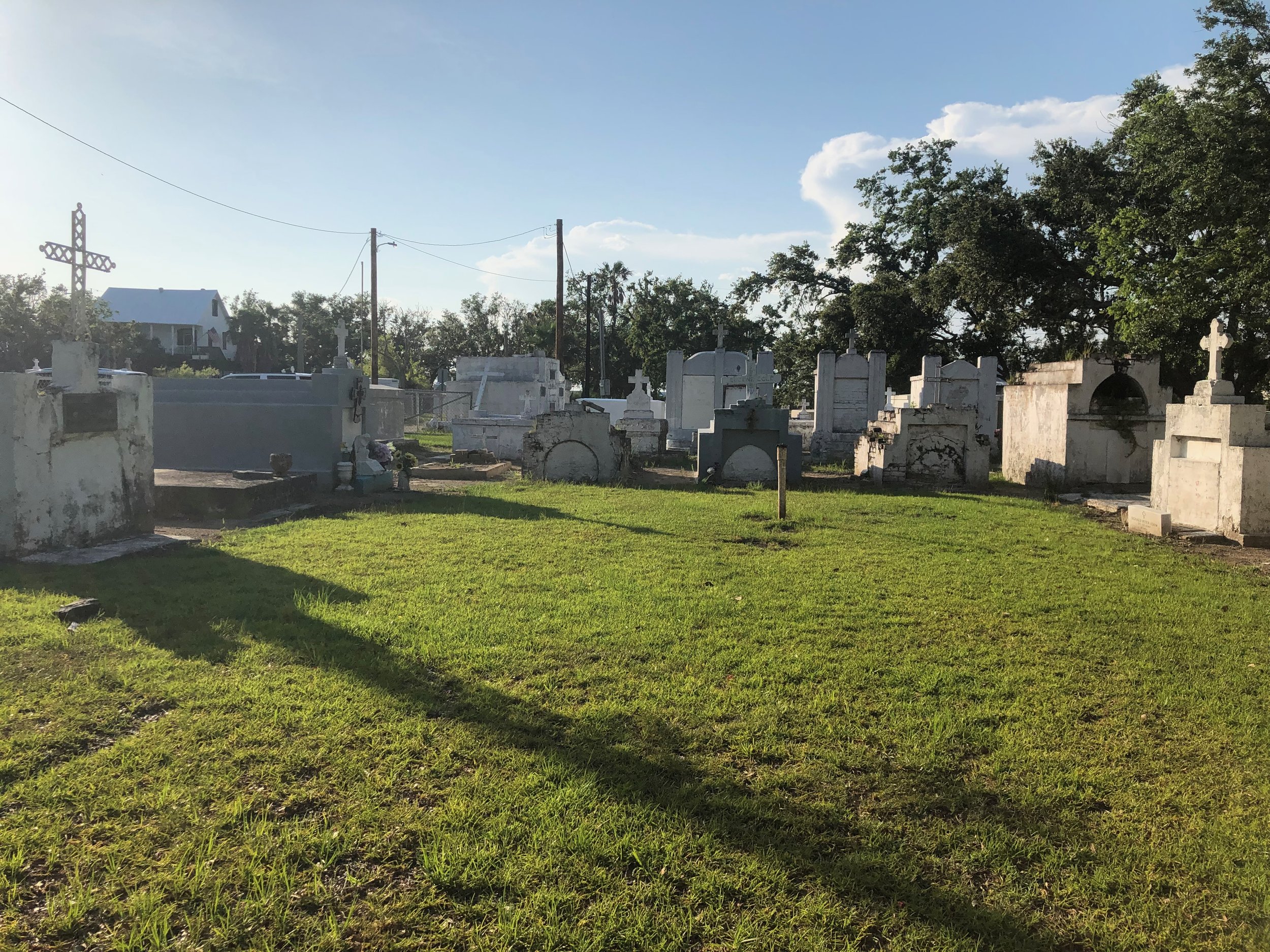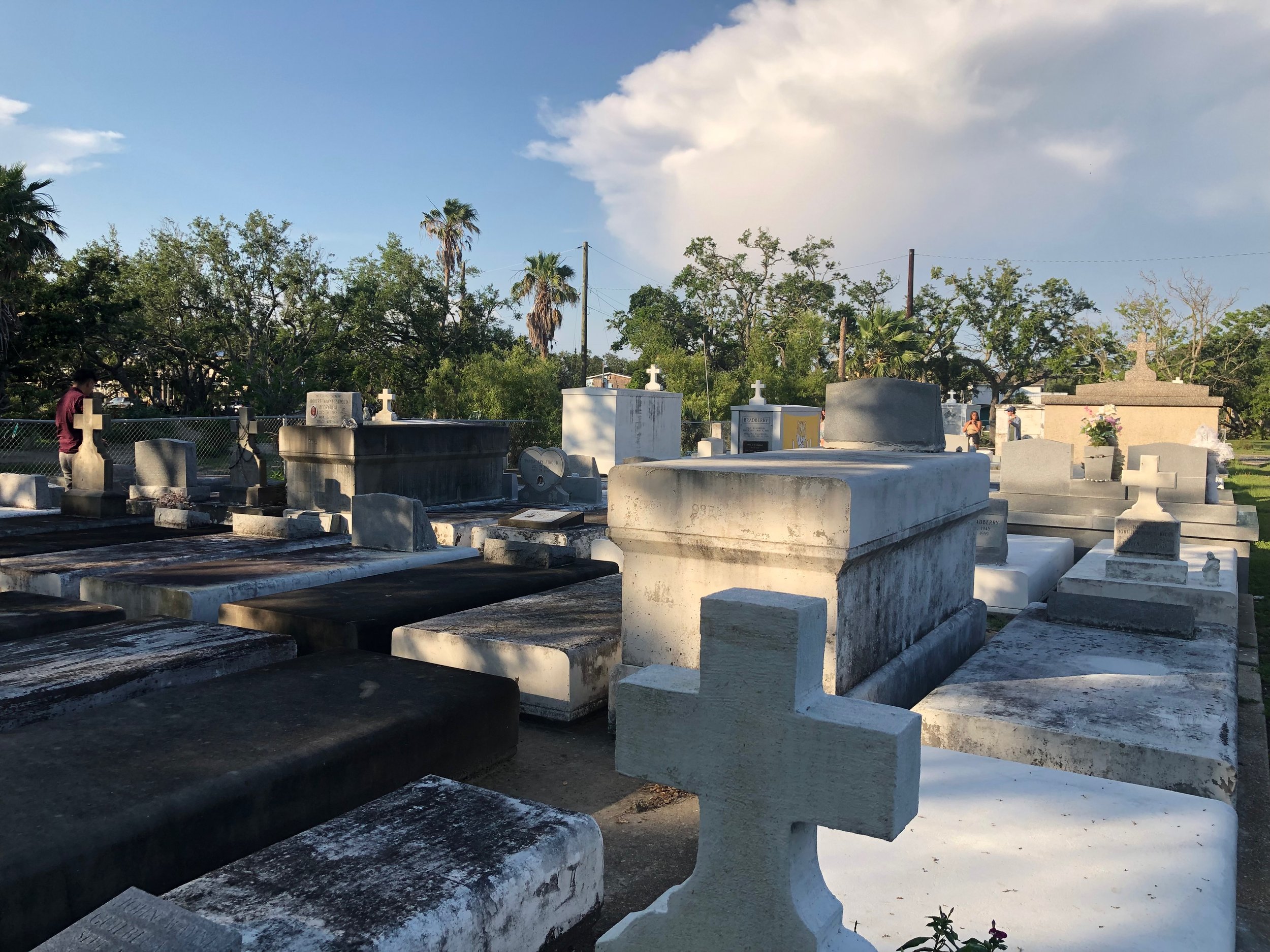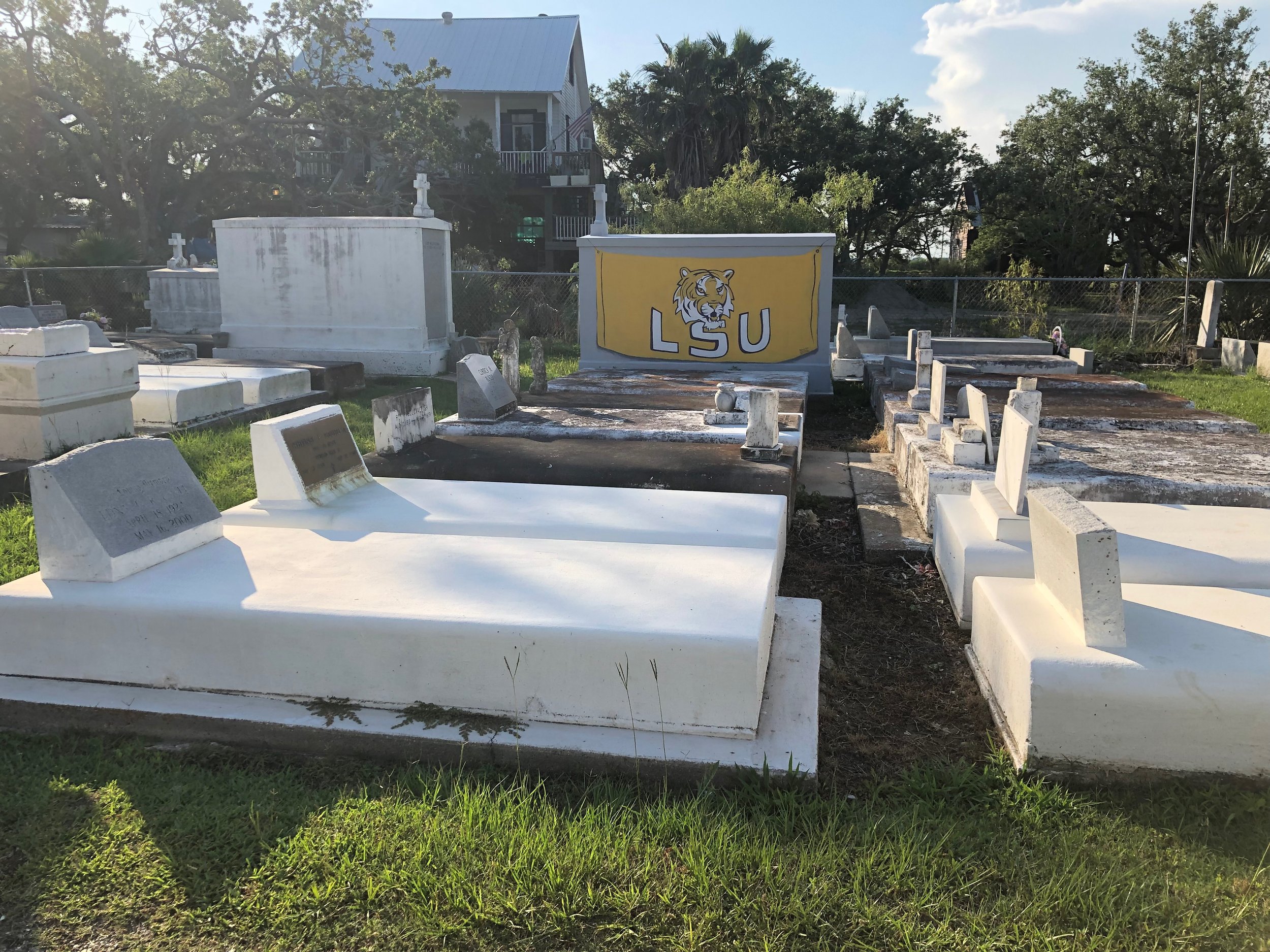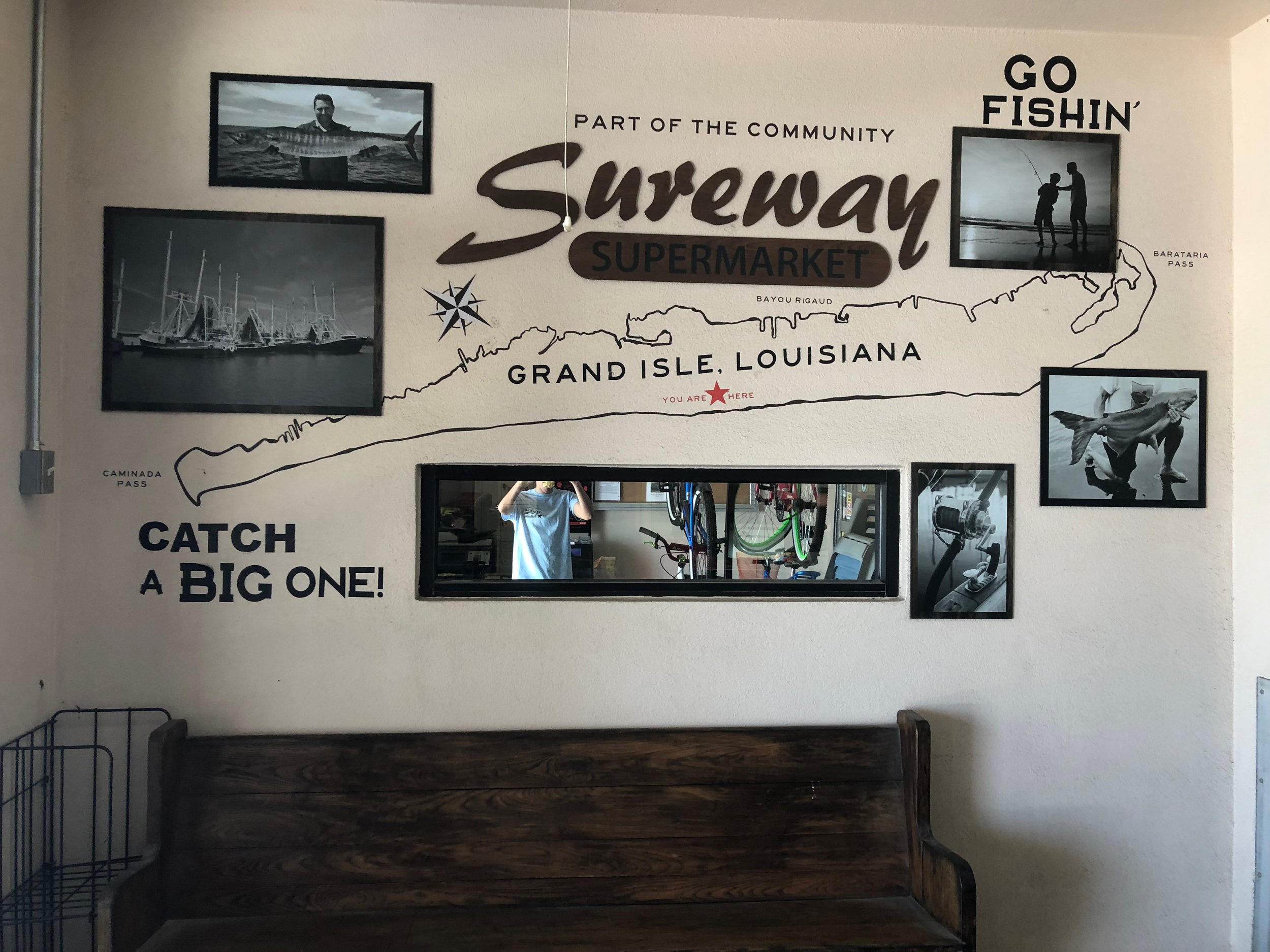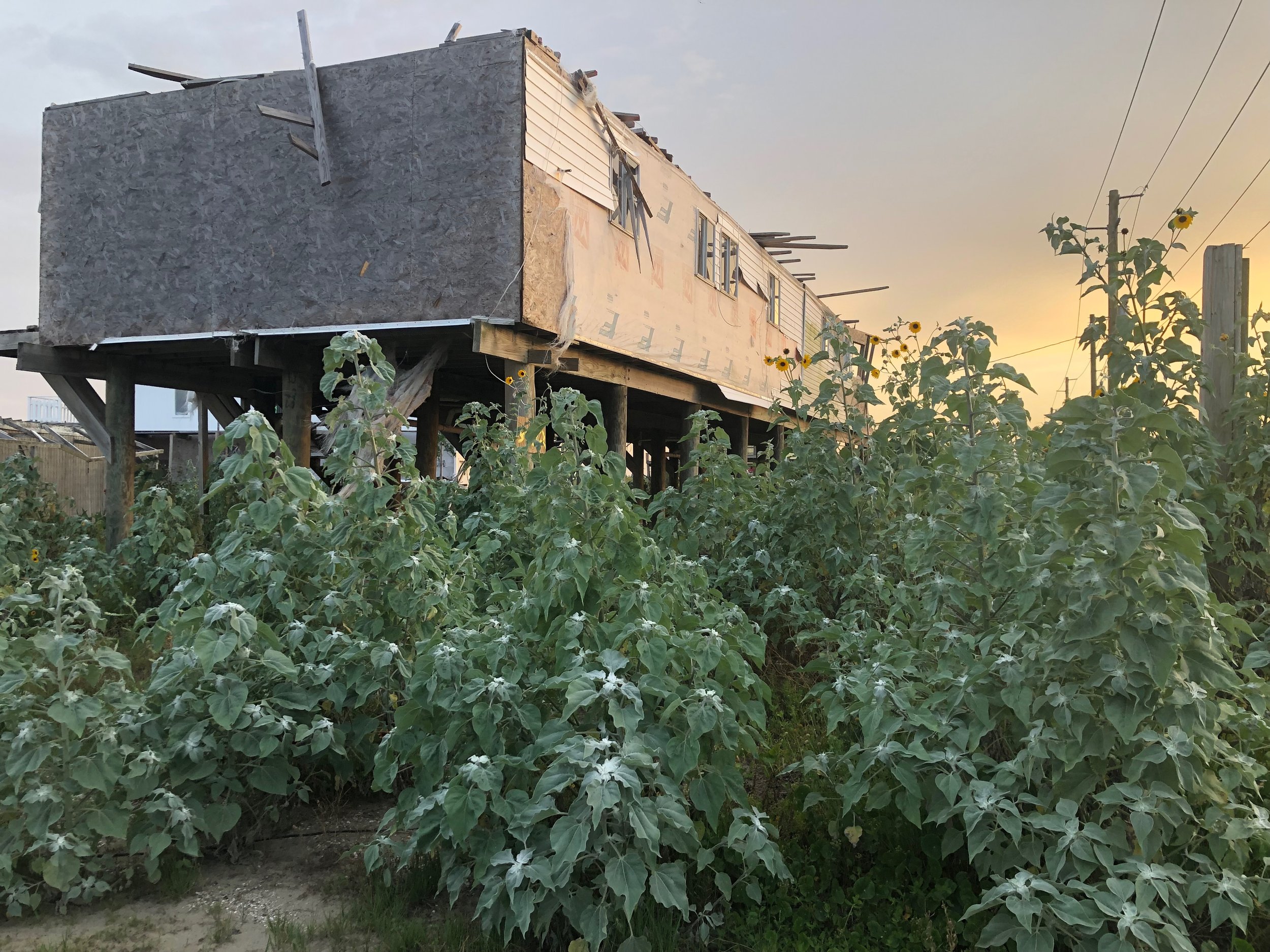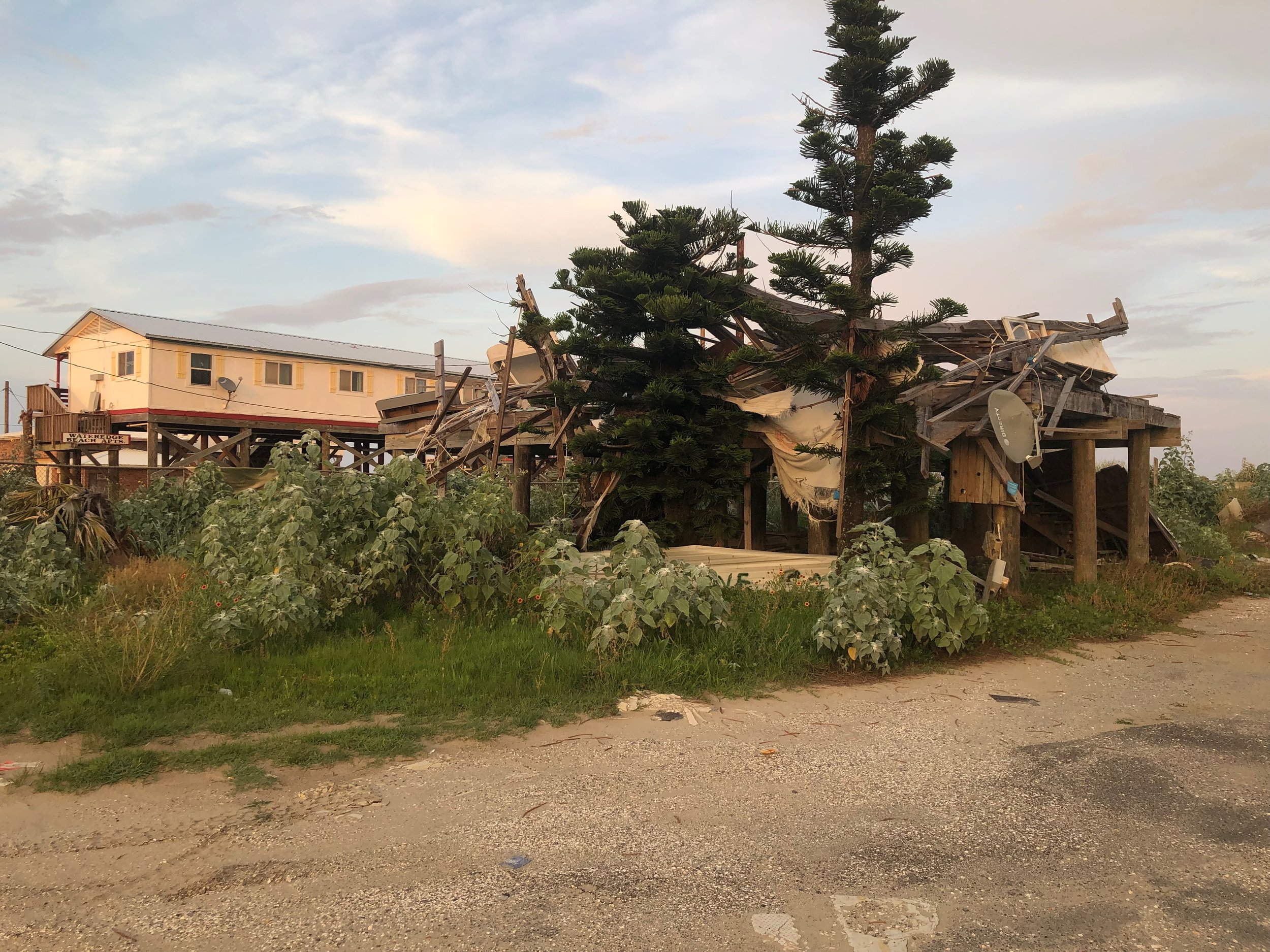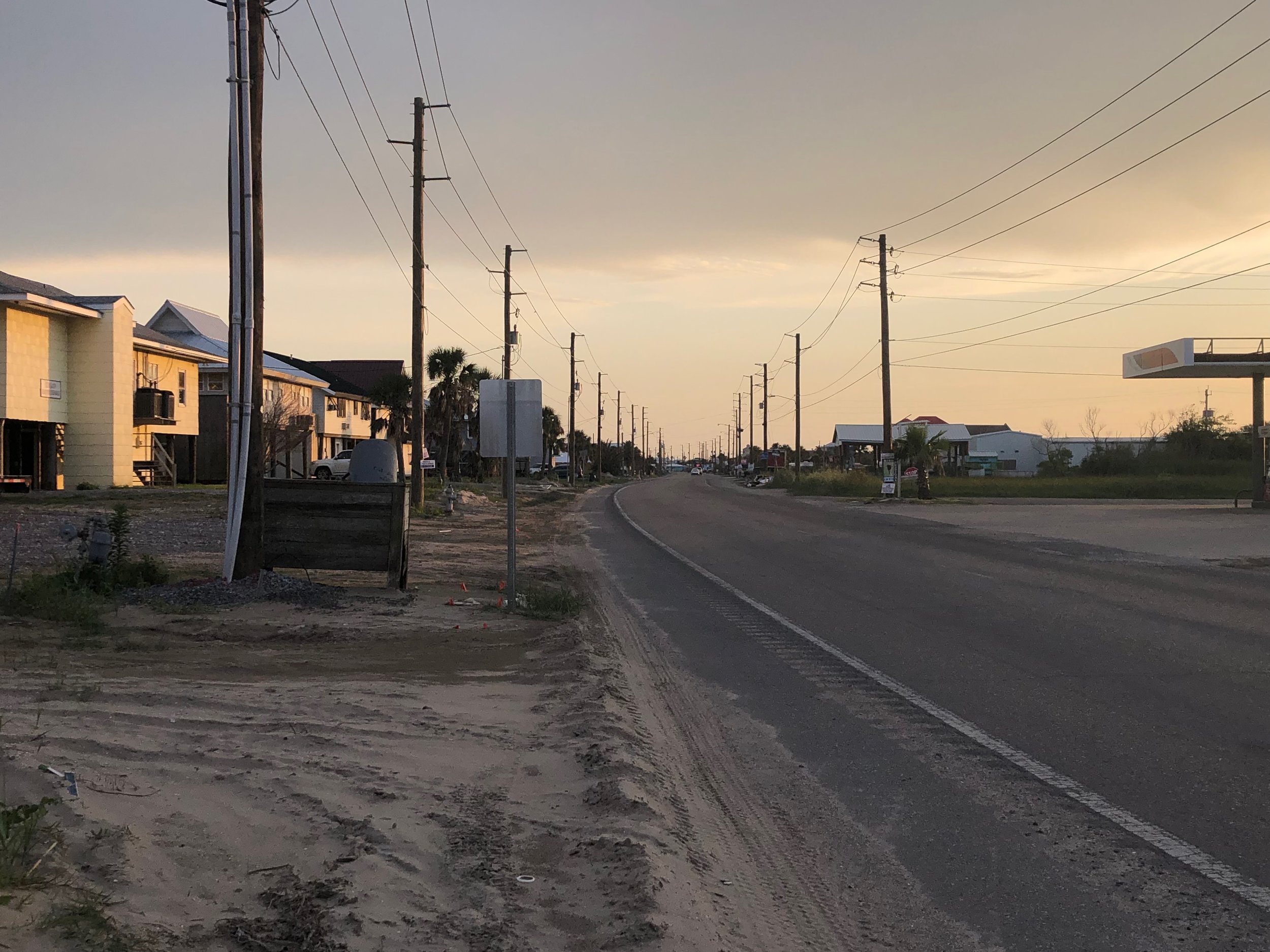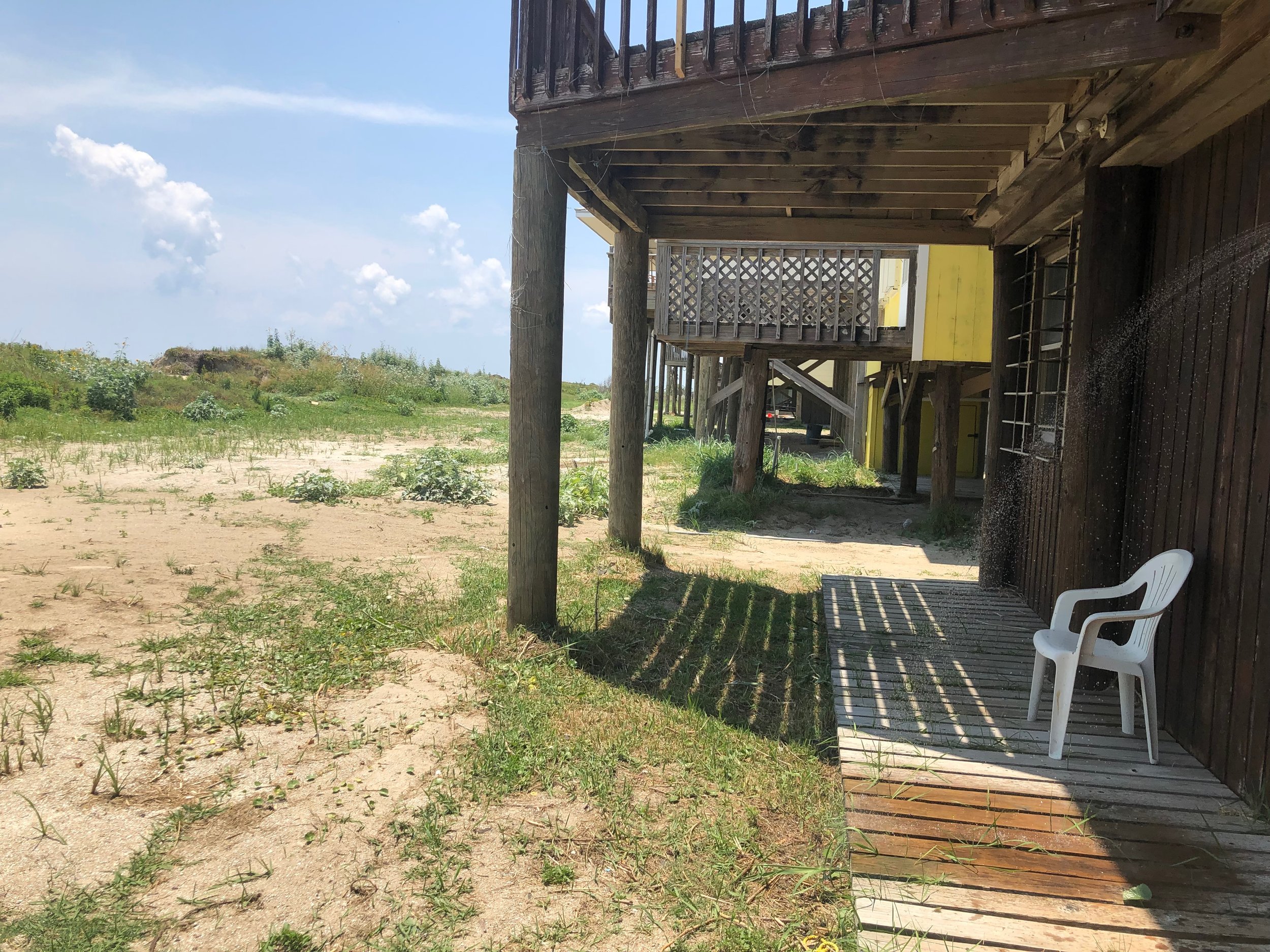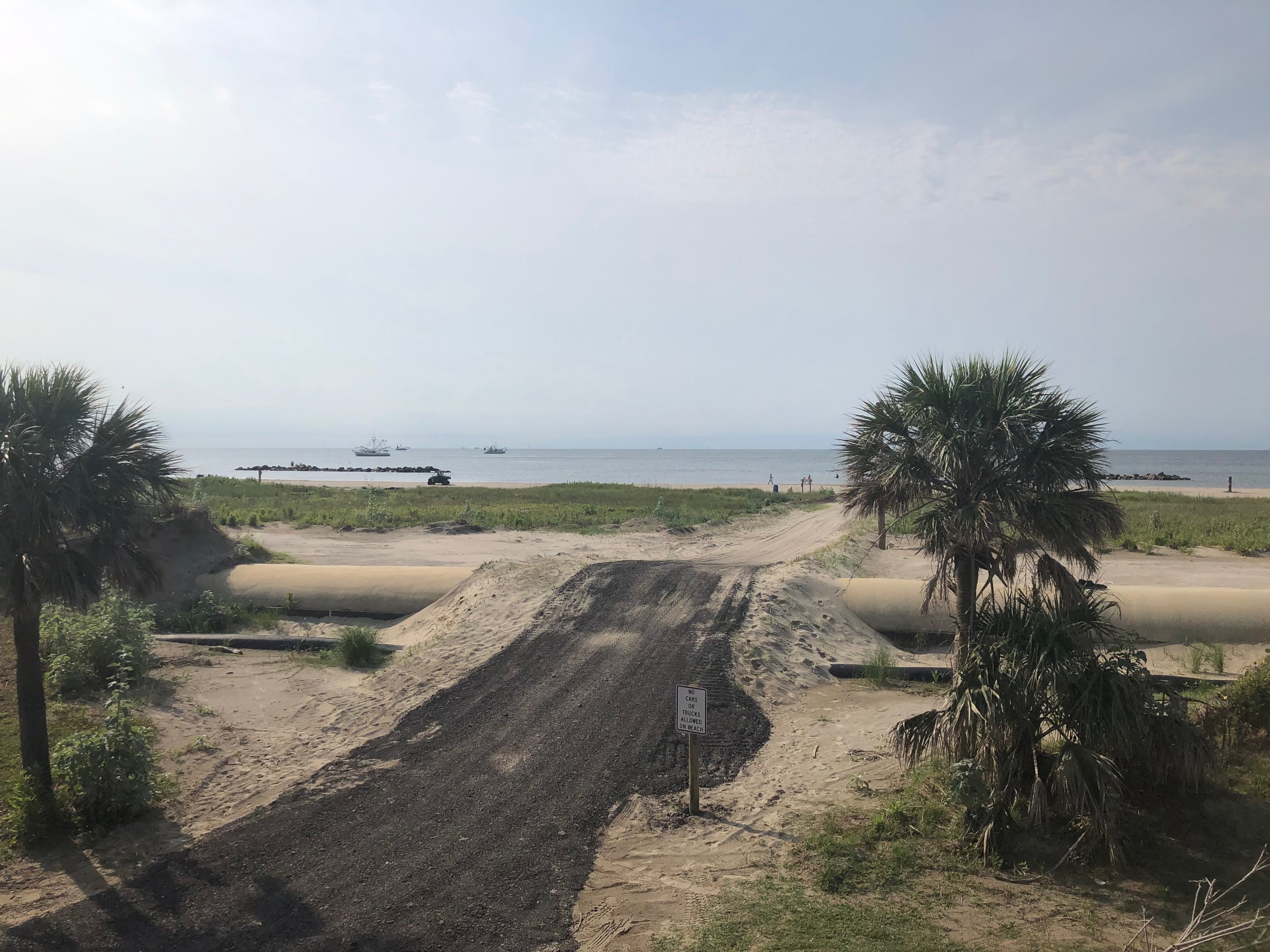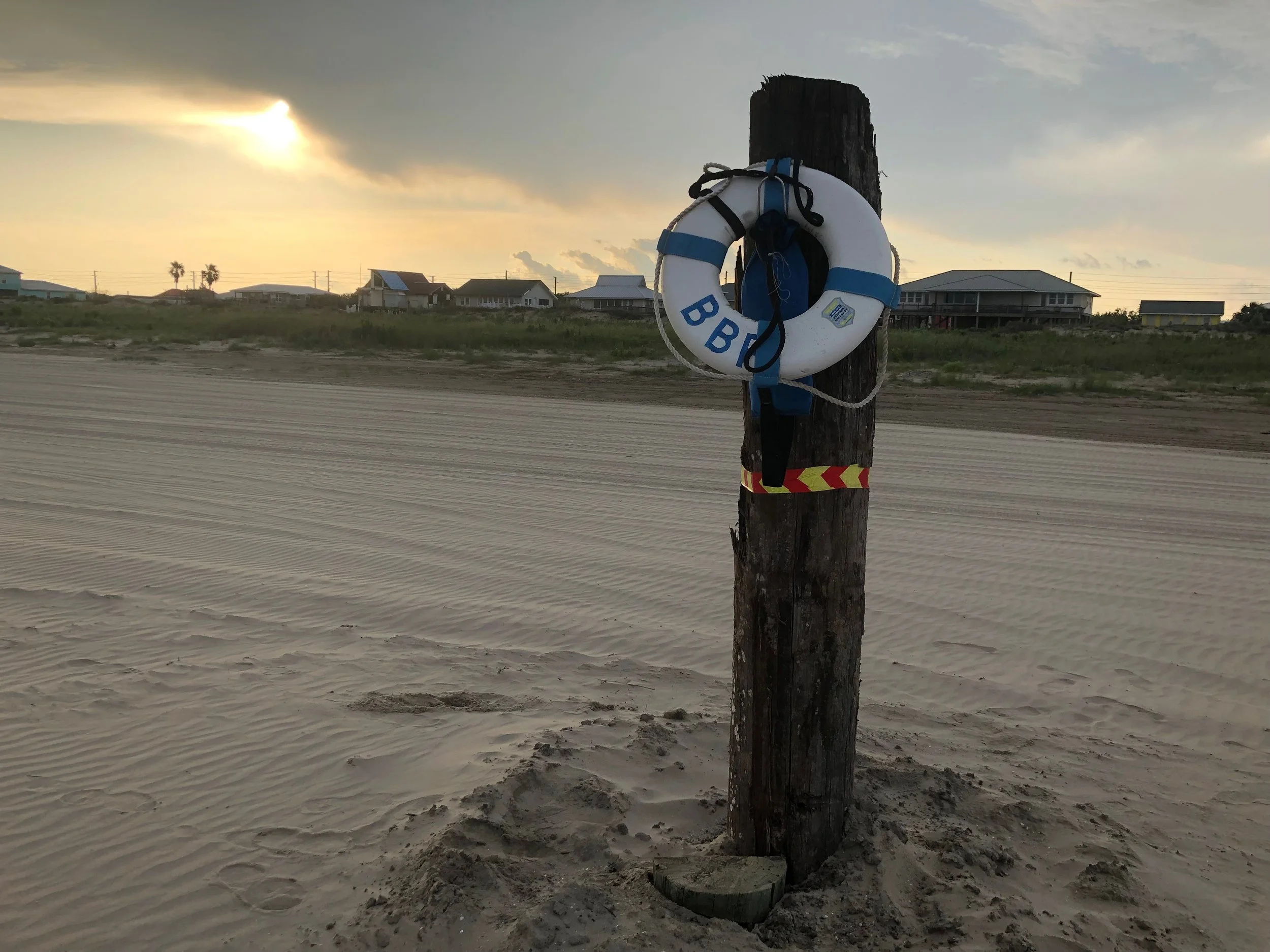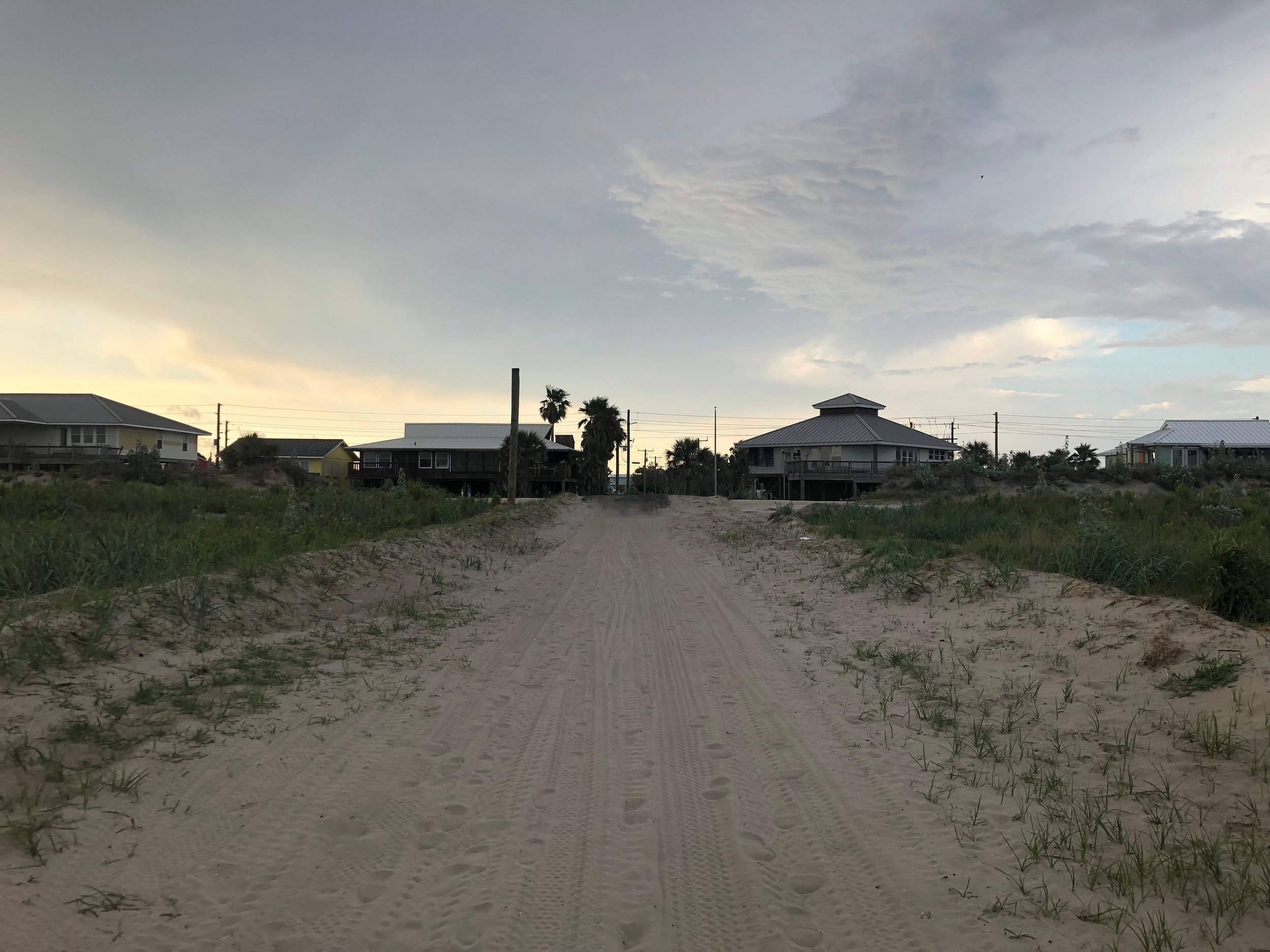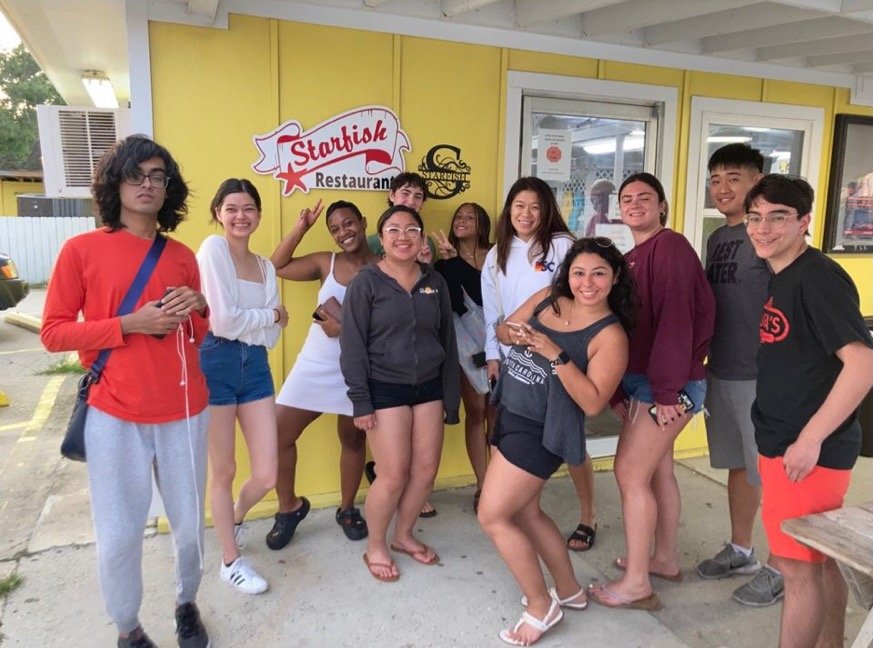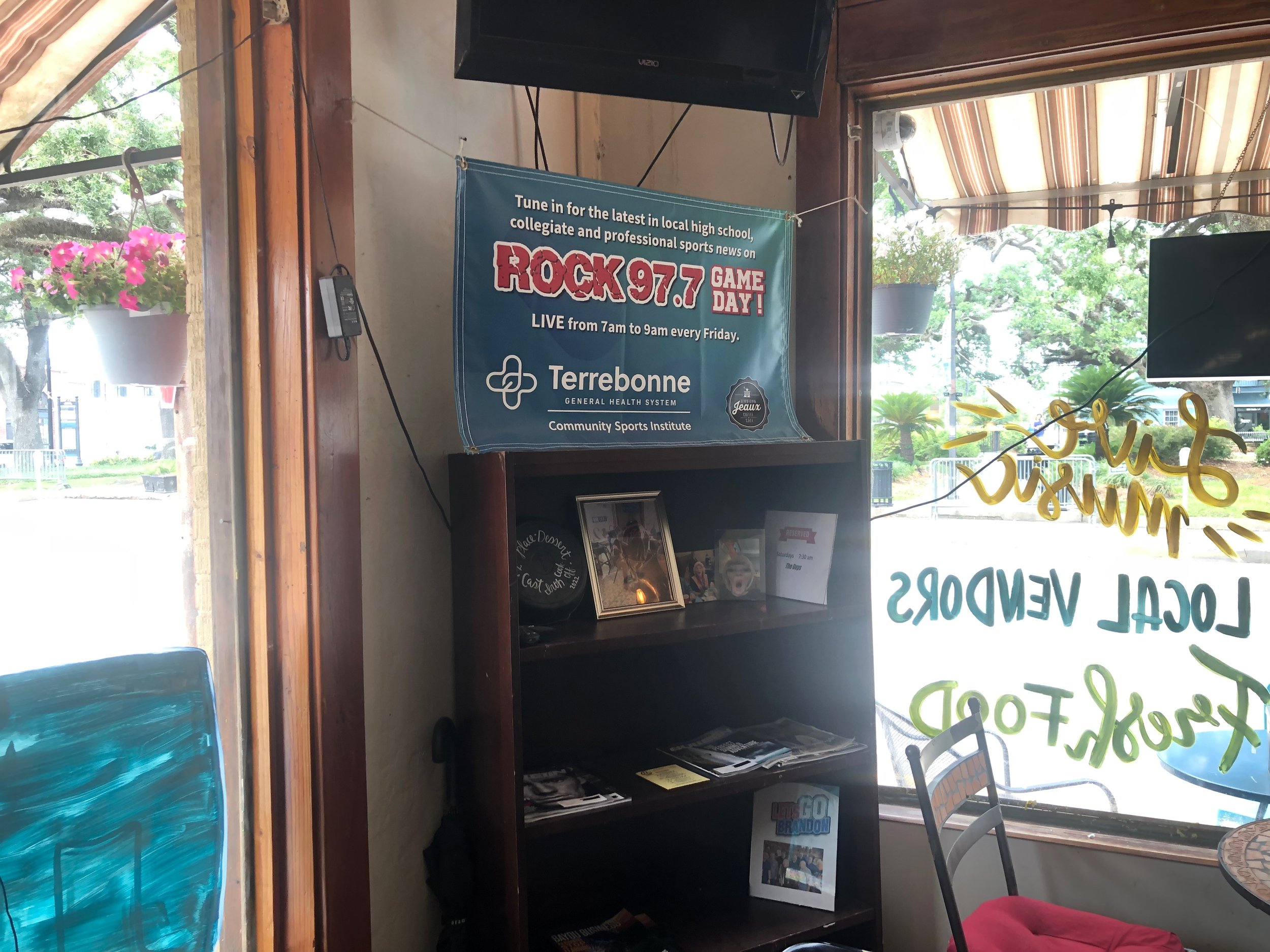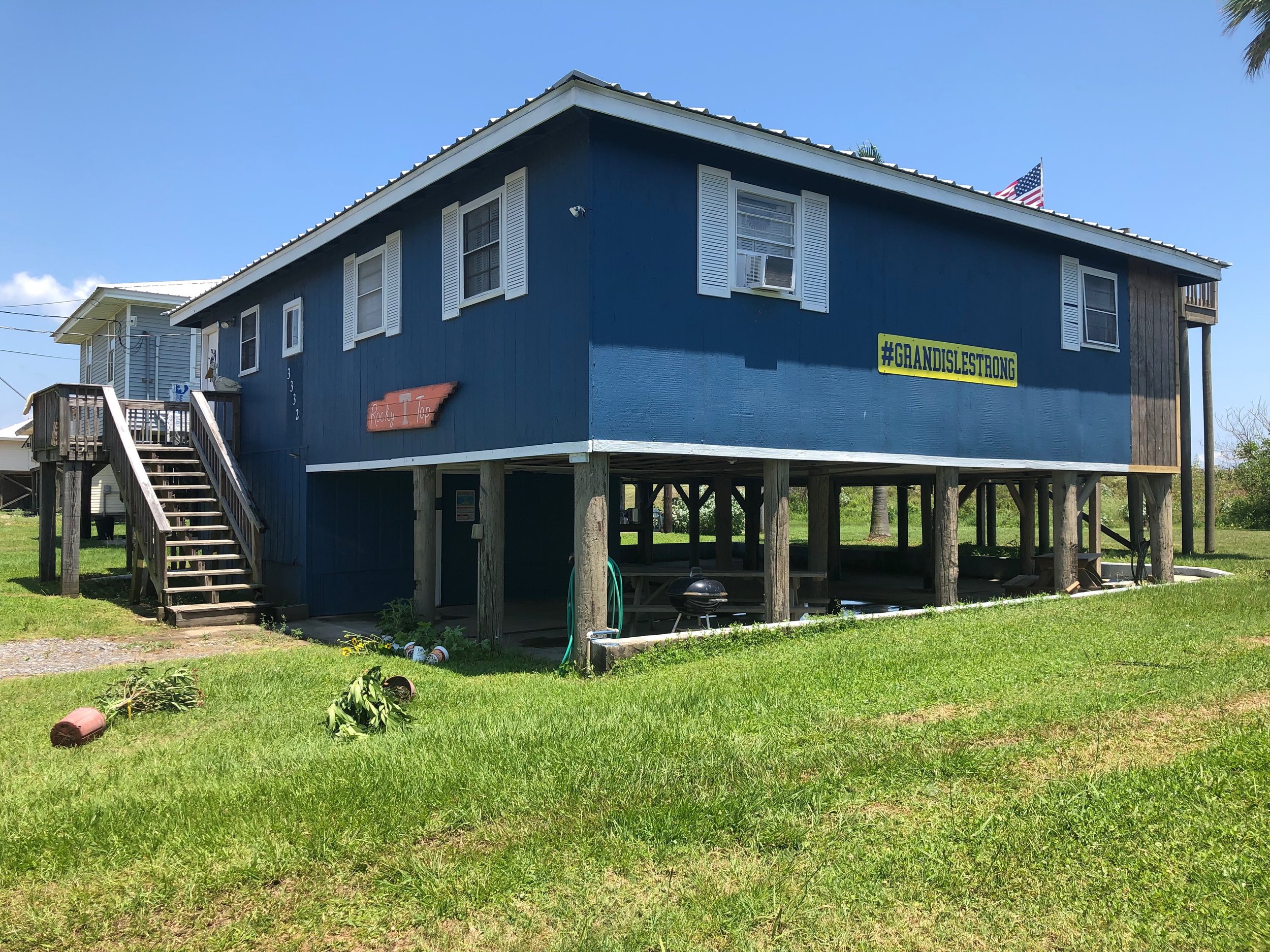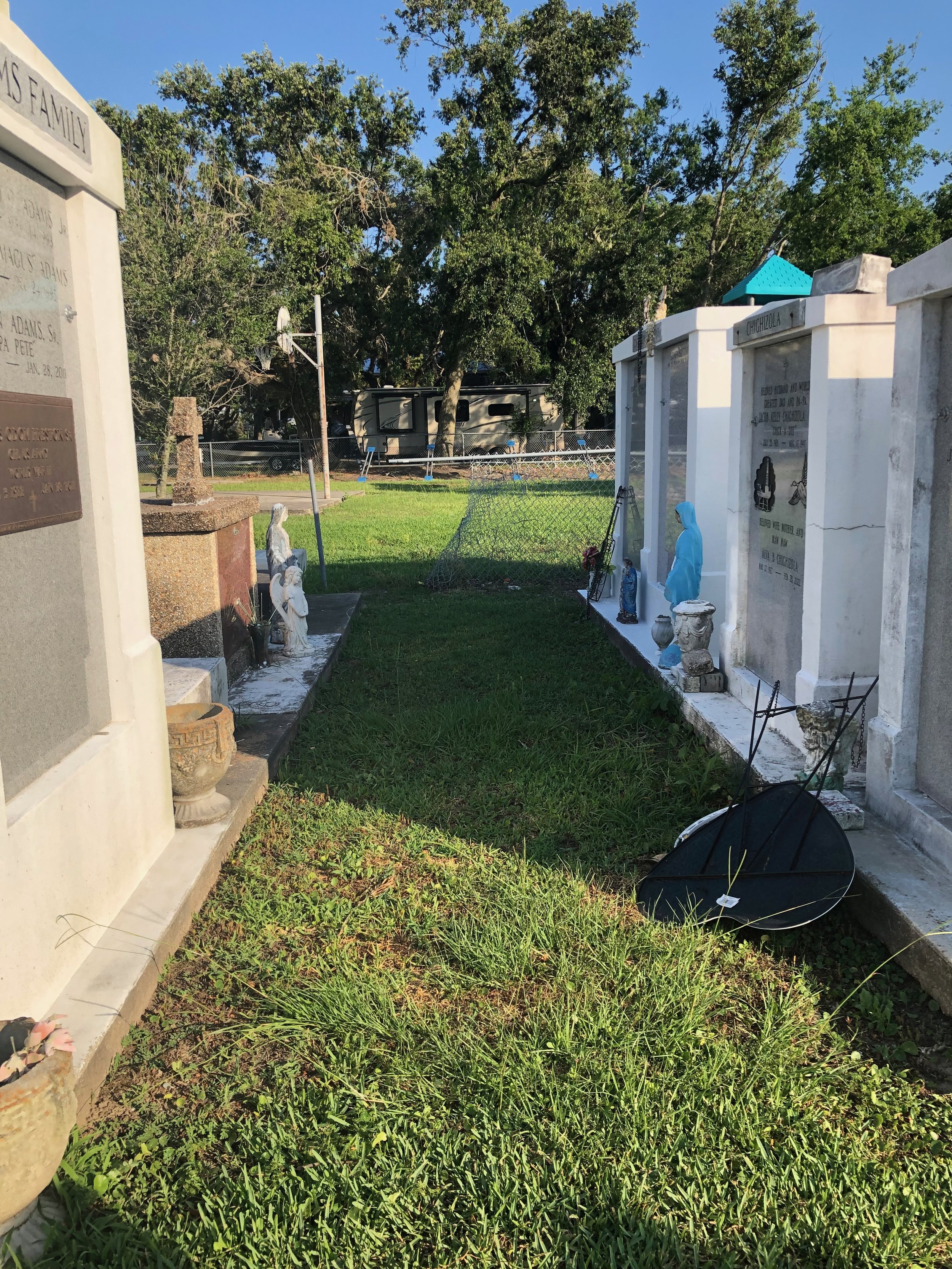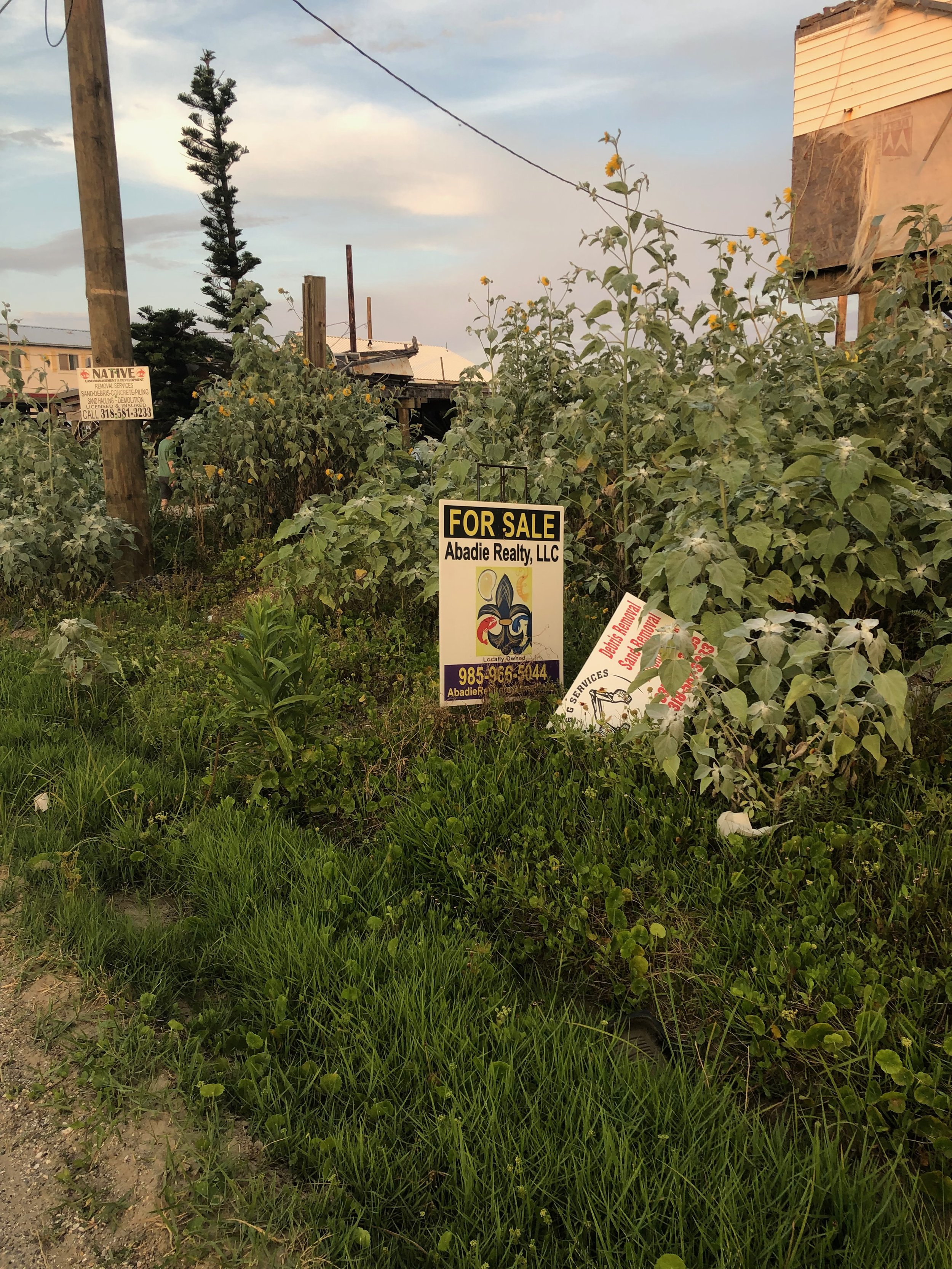On a Saturday evening, I arrived in Louis Armstrong International Airport to begin my Maymester journey that spanned across various regions of Louisiana, the first of them being a charming little island called Grand Isle. My stomach was running on fumes and the jet lag had not yet set in. The first of my meals comprised of an unhealthy dose of fried chicken nuggets, mini beignets injected with artificial raspberry flavoring, and leftover French fries that deserved a better fate than my grumbling stomach. The food was far below expectations, but still, it had a story to tell. The meal was courtesy of the beloved Louisiana fast-food chain Popeyes. This restaurant – and many others – worked off an 8pm closing deadline. By removing the graveyard shift mentality, employees are given the flexibility they need to return to their dwellings and rest after a monotonous day’s work. This theme of relaxation continued to play its tune for the remainder of our time on Grand Isle.
“He was spending his summer vacation, as he always did, with his mother at Grand Isle…‘the house’ had been a summer luxury of the Lebruns…it enabled Madame Lebrun to maintain the easy and comfortable existence which appeared to be her birthright.”
One of the first books of our bookpacking journey was Kate Chopin’s The Awakening. The story begins and ends with a Creole woman and wife by the name of Edna Pontellier. She and her husband, Leonce Pontellier, live with their children on Grand Isle, a small island located West of the Mississippi Delta. It’s the 1890s, Industrialization has made its impact on the traveling lifestyle of Louisiana’s inhabitants. Those who had the jobs had the stable wages, which enabled the emergence of a vacationing era where one could afford the luxury of nearby travel to not-so-distant places. For the Lebruns, the vacation home was a gateway to comfortable living. It signified the easy-going, carefree state of the Creole population which is still very much alive today. And what do we mean by Creole? This term has an endless number of definitions, but for now we will condense it to fit the mixing of the French and Spanish.
Chairs that scream “sit on me!”
“The water of the Gulf stretched out before her, gleaming with the million lights of the sun. The voice of the sea is seductive, never ceasing, whispering, clamoring, murmuring, inviting the soul to wander in abysses of solitude.”
When we arrived at the house, I was welcomed by several reclining chairs overlooking the emerald ocean. In the distance I could make out several shrimping vessels, eagerly awaiting their next catch of shrimp. The interior of the house was nearly all wood, giving off a warm cabin-like essence. As I made my way to the ocean, there were these rows of houses with the similar architecture: large wooden beams on the bottom for support and slanted rooftops – sometimes accompanied by a much smaller roof piece. In the gulf were these rock formations which acted as levies to protect the homes from elevated water levels. While dipping my feet in, I could feel a weight lifting off my shoulders; the burdens of life were briefly put on hold. With the humid air gently rolling over my face, it was almost like I was in a trance. Like Edna, my soul belonged to the will of the nature’s currents. The only thought that could invade my clear mind was what was on the menu for that evening. In keeping with local cuisine, my taste buds were ill-prepared for what was to come.
This island, while small, still had much to offer in the form of deep-South cuisine. My first delicious encounter with the local diet was at a low-key gas station called Jo-Bob’s Gas & Grill. Jo-Bob’s had your local liquor-store essentials, from the go-to six pack of Purple Haze beer to your dependable bag of Zapp’s potato chips (I decided to get the Voodoo flavor and planned to eat these guys on the road back to New Orleans). But the real treasure I was after was at the food counter. In the back, Jo-Bob’s was equipped with simple, classic Southern dishes like po’boys, biscuits, and jambalaya. My heart longed only for the jambalaya, a rice-based concoction seasoned with meats and vegetables. Jambalaya can either be “wet” or “dry,” but this one appeared to be on the dry side. Also, this jambalaya only contained three ingredients: rice, sausage, and chicken. It wasn’t trying to flatter the customer with some fancy presentation; it was there to satisfy their soul…and it did just that. Along with the jambalaya came a buttery biscuit and meat pie (the contents of which my tongue still tries to decipher as I write these words). This was a dependable meal; no change of the weather could bring this dish out of season.
On Sunday evening, our group was given a much deeper dive into the rich seafood delicacy that this beautiful island had to offer. When we arrived at Starfish Restaurant, there didn’t appear to be a single table left for us to claim, and this was a good sign. While waiting, I quietly observed the dishes that the customers were feasting on. The po’boy was the main star of this establishment, and I would not rest until my hands had gotten a hold of one. With the waitress by my side, I placed the order as follows: a fish po’boy with a basket full of fried okra nuggets. Okra holds a special place in my heart; it’s a green seed-pod vegetable that – in its raw and natural form – almost looks like a pepper, but don’t be fooled! It does not carry any sort of spice. One nugget at a time, I felt my body dissolving into the chair. A salty, slimy, murky texture reminiscent of the wetlands that surrounded Grand Isle. My daily salt intake was reaching critical levels, and yet I still munched on.
Unfortunately, there were no green salads in sight, so the okra would have to suffice.
The waitress delivered the po’boy in two halves, one for gazing at and one to firmly grasp. I quickly analyzed it: fully dressed with diced tomatoes, shredded lettuce, and a thin spread of mayonnaise (or could the chef have made the delicious mistake of adding butter? My taste buds said yes). After taking a couple bites, there was this sense of awakening in me; fresh, fried white fish that slowly melted on the tongue. I wasn’t entirely sure about the fish type, but my gut was telling me it was catfish. It was at this moment I knew what a po’boy should represent: a harmony between healthy and unhealthy, combining the best ingredients that both the sea and land could offer. With just a dash of seasoning, the most impoverished of cuisines can become a spectacle to the lips. This dish showcased the pride of the island’s Creole population on full display. In comparison to Jo-Bob’s cuisine, the food did was not meant to be elegant but to be a sufficient and sustainable meal for the blue-collar folk of this land. There was no “fishy” taste afterwards; with the plate empty, only my grand smile remained. To wash down this smorgasbord of fried nourishment, our group was treated to a few puffy beignets. Generously powdered with sugar, the beignets were the final catalyst to my emerging coma-like state. Through experiencing the local cuisine, we collectively learned that fried food was the customary diet (although grilled options were available upon request). It was like we were at a banquet, and we were the honored guests of this island. After paying our respects and appetites to Starfish Restaurant, we returned home to lazily continue our relaxation. A time for remembering the important obligations of life would have to wait until the next day.
“A woman who would give her life for her children could do no more than that – your Bible tells you so.”
The warm and calming emotions brought on by the sea was placed with a gloomy sense of solitude. Around Monday evening, the gang and I took a stroll through Grand Isle Cemetery. In my few experiences with cemeteries, never have I seen one adjacent to a kid’s playground. Was it meant to distract the kids during funerals, or was this placed here to remind us of our earlier days? In The Awakening, Edna discusses with Adele Ratignolle about giving up the “nonessential.” Edna’s wealth, children, and husband are all things that Edna believes should not have a hold on her individual being. On the other hand, Madame Ratignolle, a Creole from New Orleans, believes that the wife should sacrifice herself for her family. This heated debate speaks to the Creole culture of keeping close family ties, even through death. For Edna, this presents a conflicting issue as she is married to a Presbyterian but has a father who is Catholic. At the cemetery, we could observe Edna’s deep Catholic ties through the burials known as mausoleum crypts. These crypts were above ground not for the purpose of addressing the risks of hurricane weather but could nevertheless serve this purpose. Rather, this design was based in Catholic roots; the bones of numerous generations of a family line, all packed into a single crypt. One other thing that I picked up on were these common surnames: Bradberry, Terrebone, and Landry. Some of these family names are the lasting remnants of French origin from this island.
I found the name Terrebone at a café in the town of Houma, further illustrating the grasp of French influence across Louisiana natives. For my French enthusiasts out there, the name translates to “good land”.
Si tu savais
〰️
Si tu savais 〰️
One of the French phrases that Edna relays to the audience is “si tu savais” (If only you knew). While this phrase will be taken out of context, I want to apply it to the current living situation of Grand Isle. In the late summer of 2021, Ida – a Category 4 hurricane – made landfall over Louisiana. To put this in perspective, Louisiana had never seen such an impactful geological disaster since Hurricane Katrina back in 2005. Grand Isle was not spared by Ida; debris littered the beaches, the walls on the houses torn clean off. At every turn, it seemed that there was no definite conclusion to this weather cycle of suffering. And yet, as I walked down the long road stretches, I saw wall posts and lawn signs signaling a different story: a road to recovery. It was like each advertisement was a helping hand to the cause: one being roof repair, another debris removal, another for reconstruction efforts, and another for demolition and home remodeling. If there is one takeaway I got from The Awakening, it’s that nature is an immeasurable power that can impact human lives in ways that we can’t quite comprehend. On our last day on Grand Isle, I saw a banner on one of the houses with the hashtag “grandislestrong.” This community is filled with a lively and resilient Creole community, and I am hoping that I get the chance to come back and see if they restore Grand Isle to its full glory.
